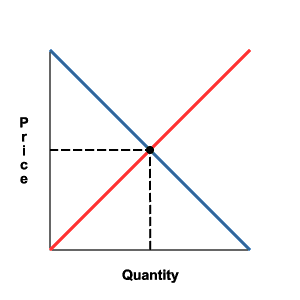We don’t care that you are "having a busy Monday," you just "ate a meatball sandwich for dinner," or you "dropped the soap in the shower three times this morning." And we really, really don’t care which “Sex in City” character you most resemble.
Here's where we all went wrong: We took our friendships online. First we began communicating more by email than by phone. Then we switched to instant messaging and texting. Now, we "friend" each other on Facebook, and communicate by "tweeting" our thoughts—in 140 characters or less—via Twitter. We humiliate ourselves by sharing regrettable, often embarrassing text messages late at night while drunk. Until finally, we realize that we have shared way too much, say FML, and tell the world about it.
All this online social networking was supposed to make us closer. And in some ways it has. Thanks to the Internet, many of us have gotten back in touch with friends from high school and college, shared old and new photos, and become better acquainted with some people we might never have grown close to offline.
But there's a danger here, too. If we're not careful, our online interactions can hurt our real-life relationships and our most powerful tool: communication.
“We’re not communicating and using the words we’ve been given in a constructive and effective way,” Tyrone Schiff, creator of Twaxed.com, said. “We must use our words wisely.”
In August, Schiff launched the new social media entertainment site Twaxed.com. Here ridiculous, inappropriate or simply entertaining tweets are showcased. In addition, users have the opportunity to vote on the tweet by selecting “thumbs up” or “thumbs down”; one may also comment on particularly amusing posts.
The idea for Twaxed came about last summer while 22-year-old Schiff was working in Ann Arbor after graduating from the University of Michigan in May. Behind a graffiti-covered door, at the end of the alley next to the Michigan Theater and one floor below street level, a handful of entrepreneurs brainstormed in the TechArb. With 18-foot ceilings and no natural light, the room glooms from the hubbub of Liberty Street, just one story up. Google opened up the space over the summer and invited intelligent computer programmers and entrepreneurs to focus on building their businesses.
“When you put those two groups [programmers and budding entrepreneurs] together you just make a lot of stuff,” Schiff said. “It’s the kind of place where you just show up if you want to do something cool with your life.”
It was early August 2009 when one of Schiff’s friends sat hunched in front of his computer, astounded. He had just posted something on Twitter, and within minutes, had dozens of people following him. Then he offered the words that inspired Schiff: “You just have to beware what you share.”
“Out of that instance, I wondered, are we really thinking about what we’re saying?” Schiff said. “Because when you say something today it’s out there, in the open, and people can and will see it.”
But let's face it; the problem is much greater than which tools we use to communicate. It's what we are actually saying that's really mucking up our relationships and our communication skills.
By creating Twaxed.com, Schiff hopes to show the world that amidst all this heightened chatter, we're not saying much that's interesting. “The only way we can become a better society is to reexamine what we’re doing,” Schiff said.
With the tagline, “Beware what you share, you will get Twaxed” Schiff hopes that the website will not only entertain, but also inspire people to be more profound and more prudent with what they share online.
“I don’t even use twitter,” Schiff said. “I find it quite strange.”
For instance, a recent Twaxed post by CharliDDS reads, “Every time I write "thesaurus" I imagine the best dinosaur ever. THEsaurus.” The hope is that Charli will find herself on Twaxed, realize how absurd her comments are, and think twice before typing her next tweet.
And it’s working. Since Twaxed launched in August, the website has grown by 4,000 percent and is averaging 2,500 visitors a day. Schiff hopes to see that number rise to 10,000 visitors by the end of October.
“I don’t think Twaxed will ever be as large as Facebook,” Schiff said. “But my goal is to hit half a million visitors a day and I think that can be achieved.”
Twitter projects to have 18 million users by the end of 2009. And in the next sixth months, Schiff hopes that Twaxed will have reached 25 percent of those users. While Twaxed has no revenue stream yet, the goal is that it will be a “freemium” that is advertising and merchandise-based.
“The future is unknown so I might as well see what happens,” Schiff said. “If it doesn’t work, I’ll just create something else.”
This story was produced by Lauren Rosenblum, senior at the University of Southern California's Annenberg School for Communication.












































